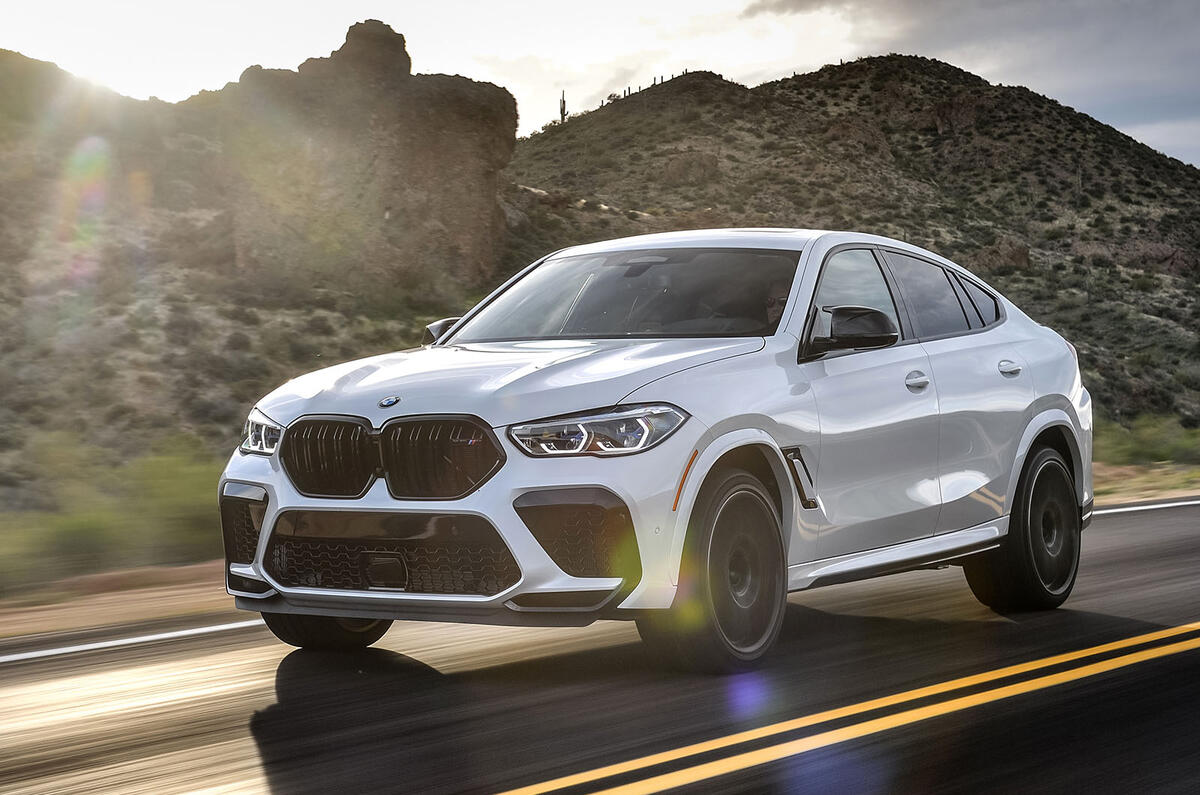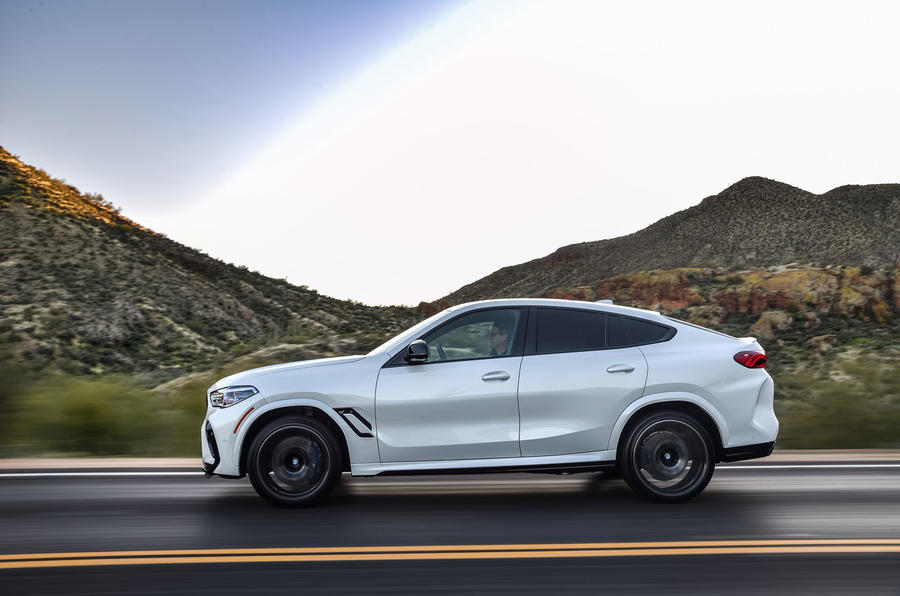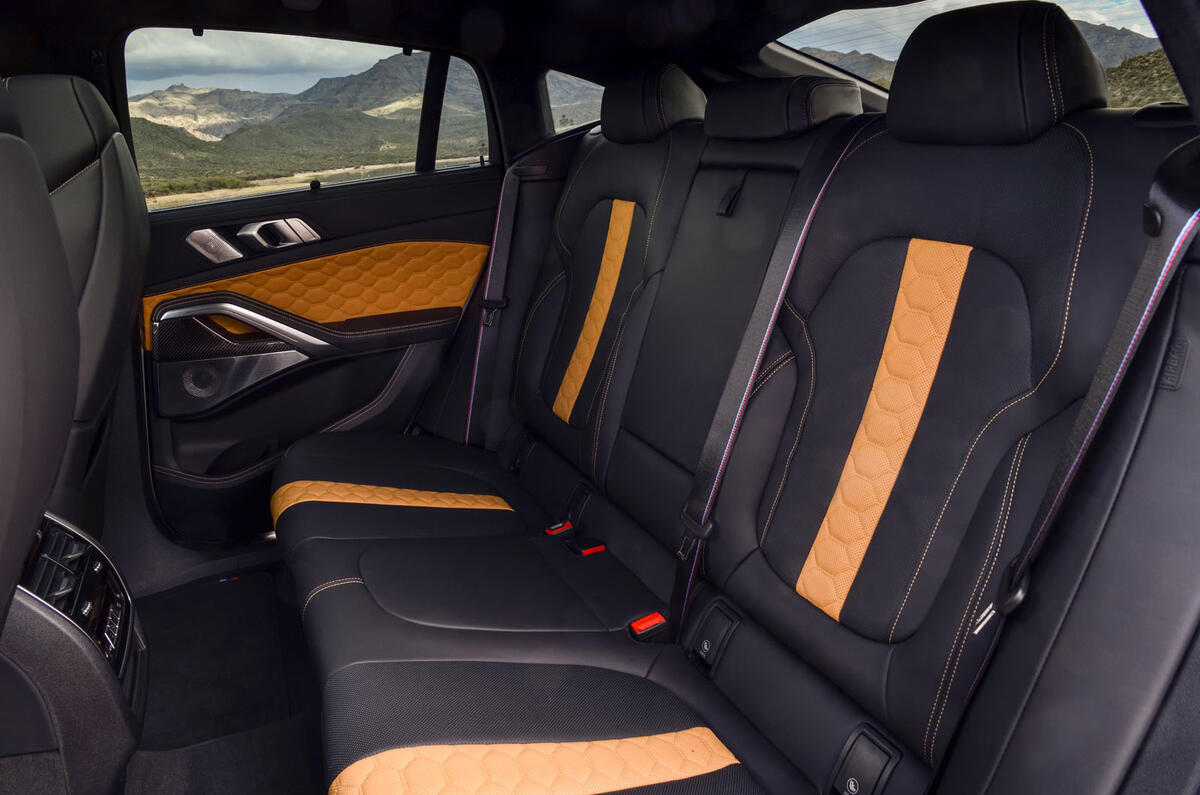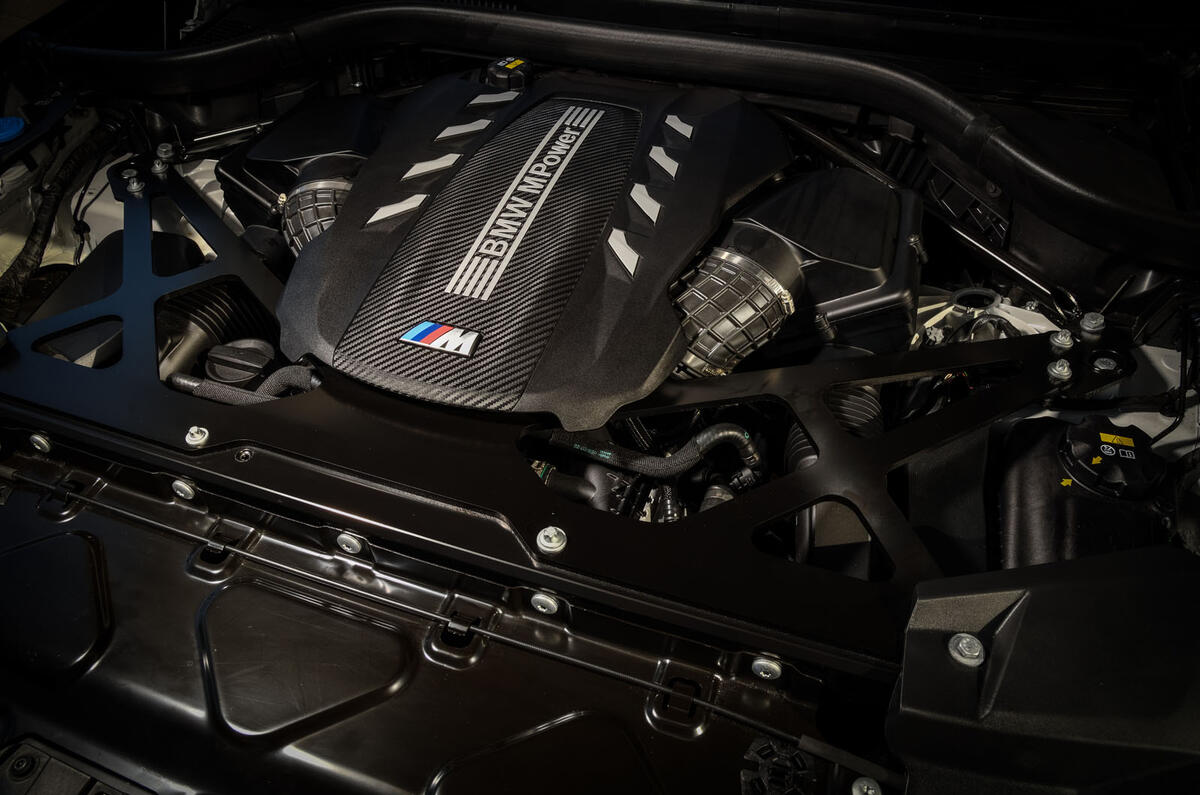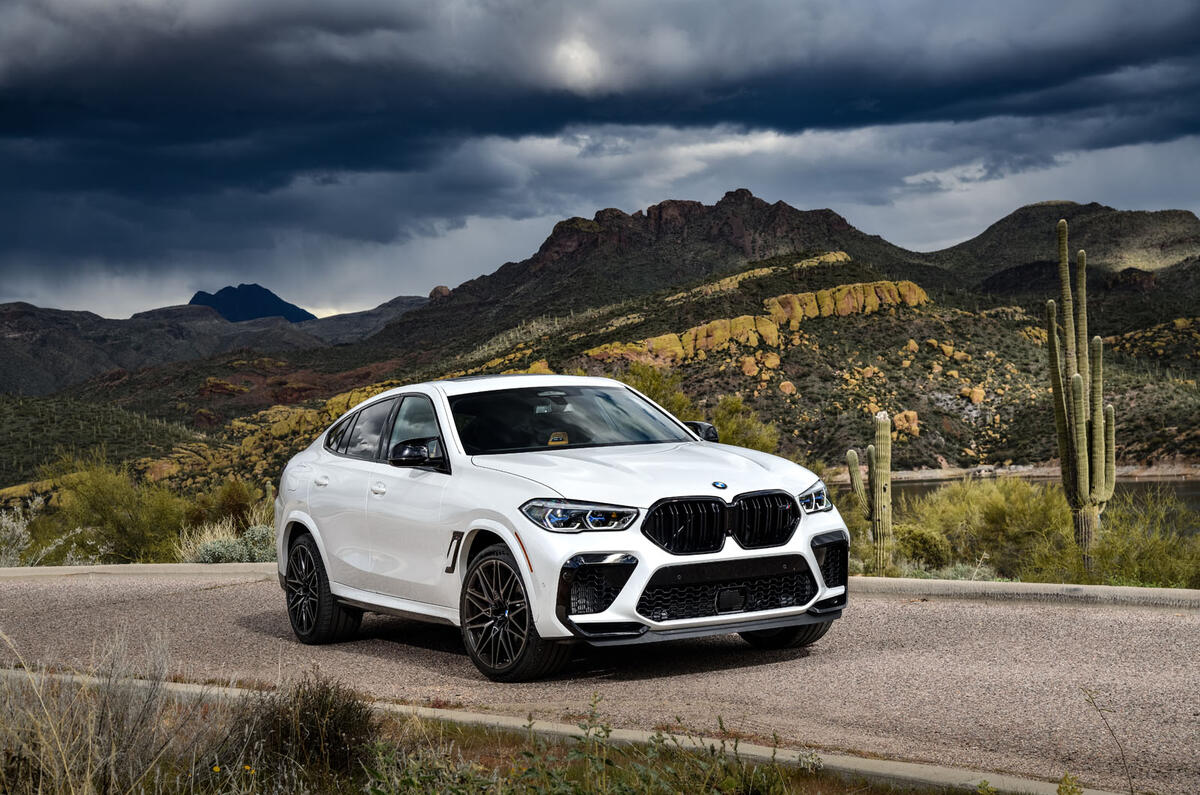BMW’s M division has been actively hinting about the introduction of electric propulsion for some time now, but it clearly thinks the traditional combustion engine still has some decent life left in it – as witnessed by the launch of the new BMW X6 M, the German car maker’s most powerful and fastest-accelerating production SUV model to date.
The new performance BMW SUV builds on the various strengths of the already highly capable BMW X6 M50i, launched in the UK late last year. It also shares its mechanical package with the arguably less flashy but more versatile BMW X5 M, alongside which it is assembled at BMW’s Spartanburg factory in the US state of South Carolina.
But rather than provide the X6 M with the electrified drivetrain that the times we live in might tend to prescribe, M has given it no lesser an engine than the twin-turbocharged 4.4-litre V8 used by the latest BMW BMW M5. In standard guise, the highly strung petrol unit, which uses a cross-bank manifold as well as M’s double Vanos variable camshaft timing and Valvetronic fully variable valve timing to give it a high-revving character, kicks out a meaningful 592bhp. However, with different electronic mapping, among other unspecified changes, it gains a further 24bhp, taking the output of the Competition model sold in the UK to 616bhp at 6000rpm. In both cases, torque peaks at 552lb ft between 1800rpm and 5800rpm.
This gives the new flagship X6 model some 49bhp more than its predecessor and a stout 93bhp more than the X6 M50i. For added perspective, it is also 74bhp more than that served up by the Porsche Cayenne Coupe Turbo and 24bhp more than that offered by the Audi RS Q8 – both of which use the same twin-turbocharged 4.0-litre V8 petrol engine in differing states of tune.


